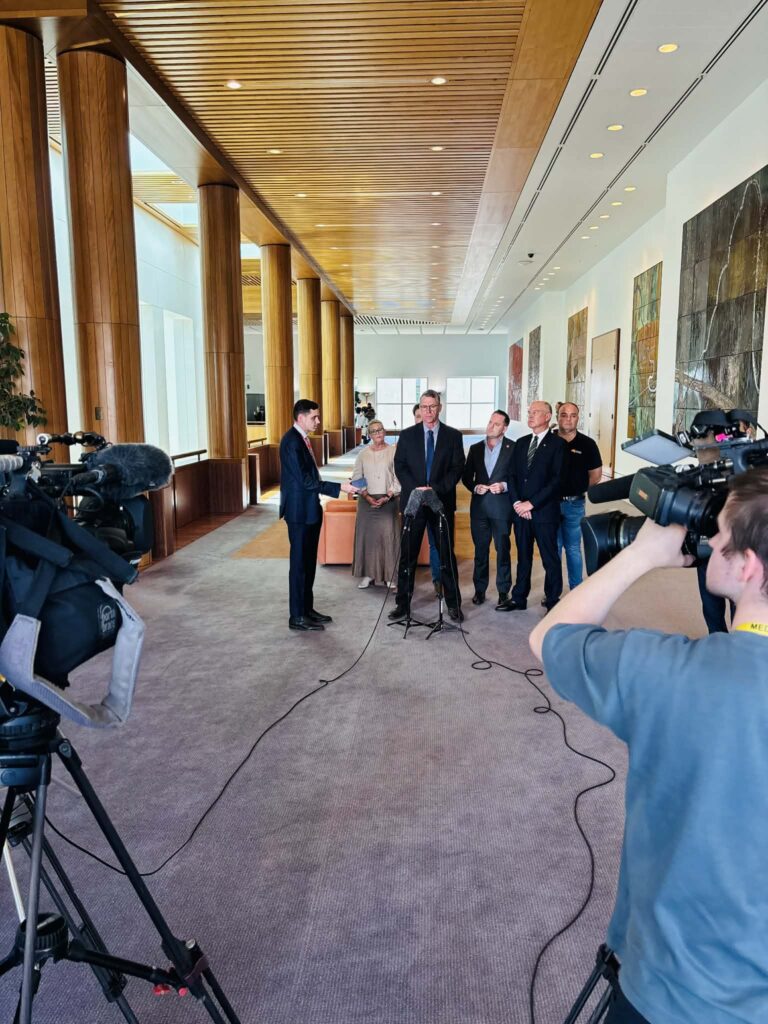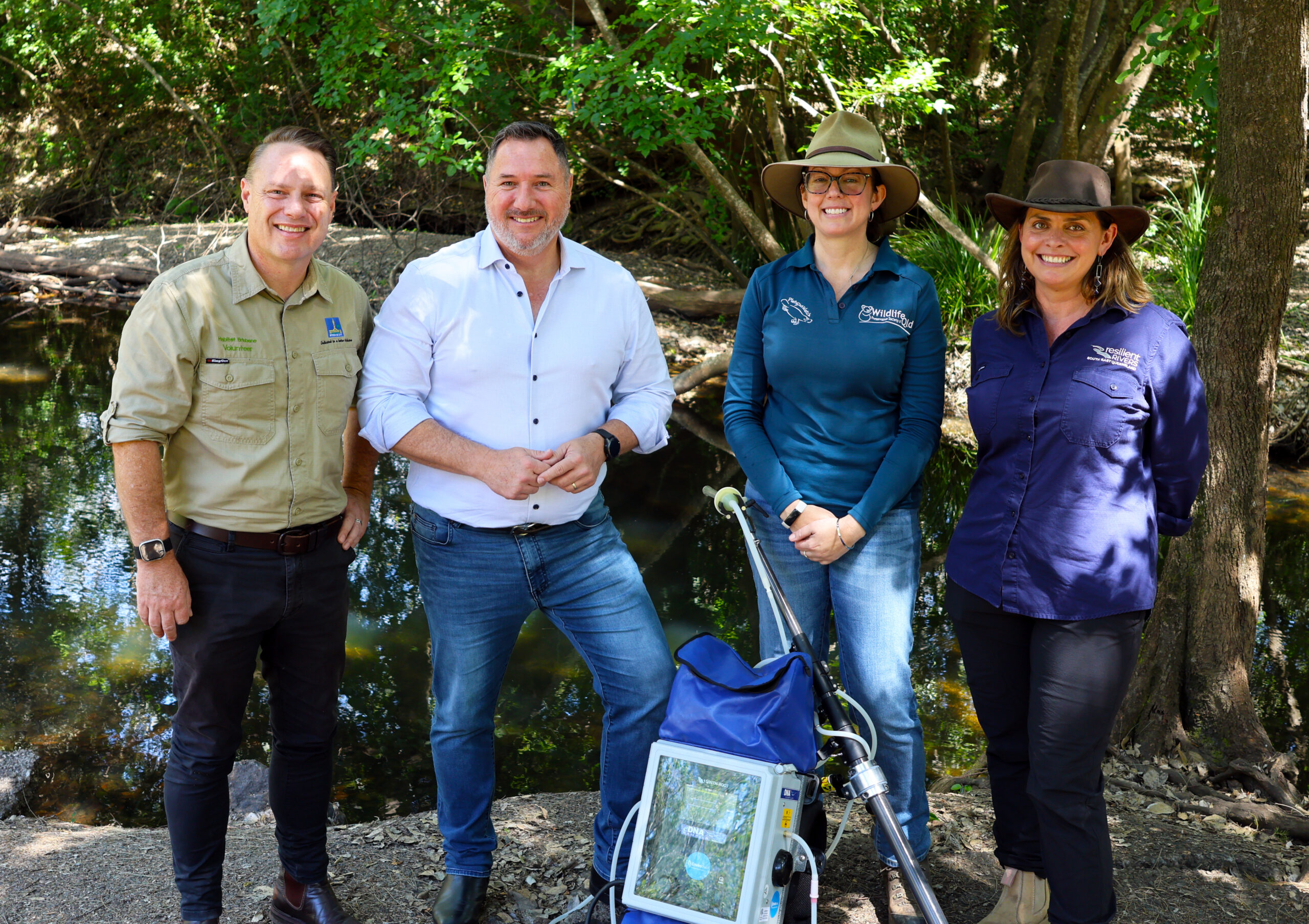- Queensland delegation in Canberra calling on Federal Government for additional support to stamp out “super pest” fire ants
- Fire ants estimated to cost Australia $2 billion a year, devastating public health, wildlife, tourism, agriculture and local backyards.
- Queensland Government, Council of Mayors (SEQ) and Invasive Species Council join forces to call on Federal Government to deliver on Senate Inquiry recommendation for more funding for suppression.
Calls are ramping up for Canberra to step up the fight to stamp-out red imported fire ants ahead of the Brisbane 2032 Olympic and Paralympic Games.
A delegation from Queensland has travelled to Australian Parliament House to meet with the Albanese Government and Coalition Opposition seeking urgent action to fight fire ants.
The group, which includes the Queensland Primary Industries Minister, Mayors from South East Queensland (SEQ) and the Invasive Species Council, is calling on the Federal Government to help make Australia fire ant free by:
- Providing an urgent funding boost to match Queensland’s $24 million investment into aerial treatment in the suppression zone.
- Committing to continued funding from 2027-28 onwards to eradicate fire ants from SEQ by 2032.
Globally recognised as a ‘super-pest’, fire ants are aggressive and dangerous with painful stings that can be fatal.
The Australia Institute has estimated if fire ants spread across Queensland, they could sting more than 1.5 million people, cause six deaths and result in 116,000 medical visits annually, rising to 30 deaths and over 570,000 medical visits annually if the ants spread nationally.
It also estimated the economic impact of fire ants will exceed $22 billion by the 2040s, and every dollar invested towards eradication of the pest could result in $3 to $9 of public benefit.
Eradication efforts are being delivered by the National Red Imported Fire Ant Eradication Program (NRIFAEP) funded by the states and the Commonwealth, in addition to the Fire Ant Suppression Taskforce (FAST) which remains solely funded by the Queensland Government. These control activities are supported by Councils at a growing cost of millions of dollars each year to local communities.
Both the independent National Red Imported Fire Ant Eradication Program (NRIFAEP) Strategic Review (2021) and the 2023 Senate Rural and Regional Affairs and Transport Committee reports emphasised the critical need for suppression to deliver eradication.
The Australian Government has budgeted a $268 million investment in the NRIFAEP from 2023-2027 but this doesn’t address growing ant populations inside the suppression zone.
In 2024 a senate inquiry recommended the “…Australian Government work closely with the Queensland Government to commit to additional funding for the FAST to support self?treatment by residents, local governments, and landholders…”
In March 2025, the Crisafulli Government committed an additional $24 million for suppression work, and the delegation is reinforcing Minister Perrett’s calls for the Federal Government to match this investment. It’s estimated fire ants could cost the economy more than $22 billion by 2040 if left untreated, and for this reason, the delegation is also meeting to discuss ongoing funding beyond 2027.
SEQ councils impacted by fire ants include Logan, Ipswich, Redlands, Brisbane, Moreton Bay, Gold Coast, Scenic Rim, Somerset, Toowoomba and Lockyer Valley. SEQ is home to 1 in 7 Australians and a national hub for agriculture and tourism, with iconic coastline stretching from the Gold to Sunshine Coasts, three UNESCO biospheres, and World Heritage rainforests.
The Invasive Species Council warn that without urgent action fire ants could spread to the Murray-Darling Basin by 2035 and have devastating impacts on iconic tourism destinations and beaches, national parks and native wildlife, as well as national agriculture and export sectors.
Quotes attributable to Queensland Minister for Primary Industries Hon Tony Perrett MP:
“This is not just about Queensland, it’s about protecting Australia’s biosecurity, environment, economy and outdoors lifestyle. The fire ants that break containment lines have generally been transported from the suppression area, so we need to drive down population densities to help stop the spread and we need the Federal Government to join us.
“The Crisafulli Government is serious about eradicating fire ants and we cannot underestimate the importance of suppression in reaching this goal.
Council of Mayors (SEQ) Treasurer and Lockyer Valley Mayor Tanya Milligan:
“SEQ is home to Queensland’s food bowl and one of the world’s most fertile farming regions, the Lockyer Valley. We’re critical to Australia’s food security producing more than a third of Queensland’s vegetable supply, and an estimated 5% of the nation’s produce. We need urgent action to protect our food chain, and our local farmers, communities and economies that rely on it.”
Quotes attributable to Logan City Council Mayor, Jon Raven:
“We want to see Logan and South East Queensland fire ant free, and we need all levels of Government working closely together to continue the fight to eradicate them for good.”
Quotes attributable to Somerset Regional Council Mayor, Jason Wendt:
“The threat of fire ants has already dealt a blow to our agricultural industry impacting cross-border trade and adding new regulation and cost for local businesses. Eradicating fire ants is essential for the future of our local primary producers across SEQ.”
Quotes attributable to Invasive Species Council CEO Jack Gough:
“Fire ants are one of the world’s worst super pests. If they are allowed to spread across Australia, their economic impact will be greater than cane toads, rabbits, feral cats and foxes combined. We have a closing window of opportunity to get rid of fire ants once and for all, but unless the Federal Government steps up and funding doubles, eradication will fail.”




